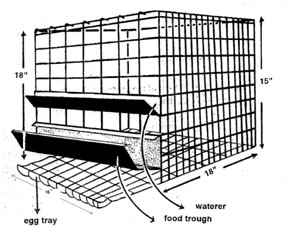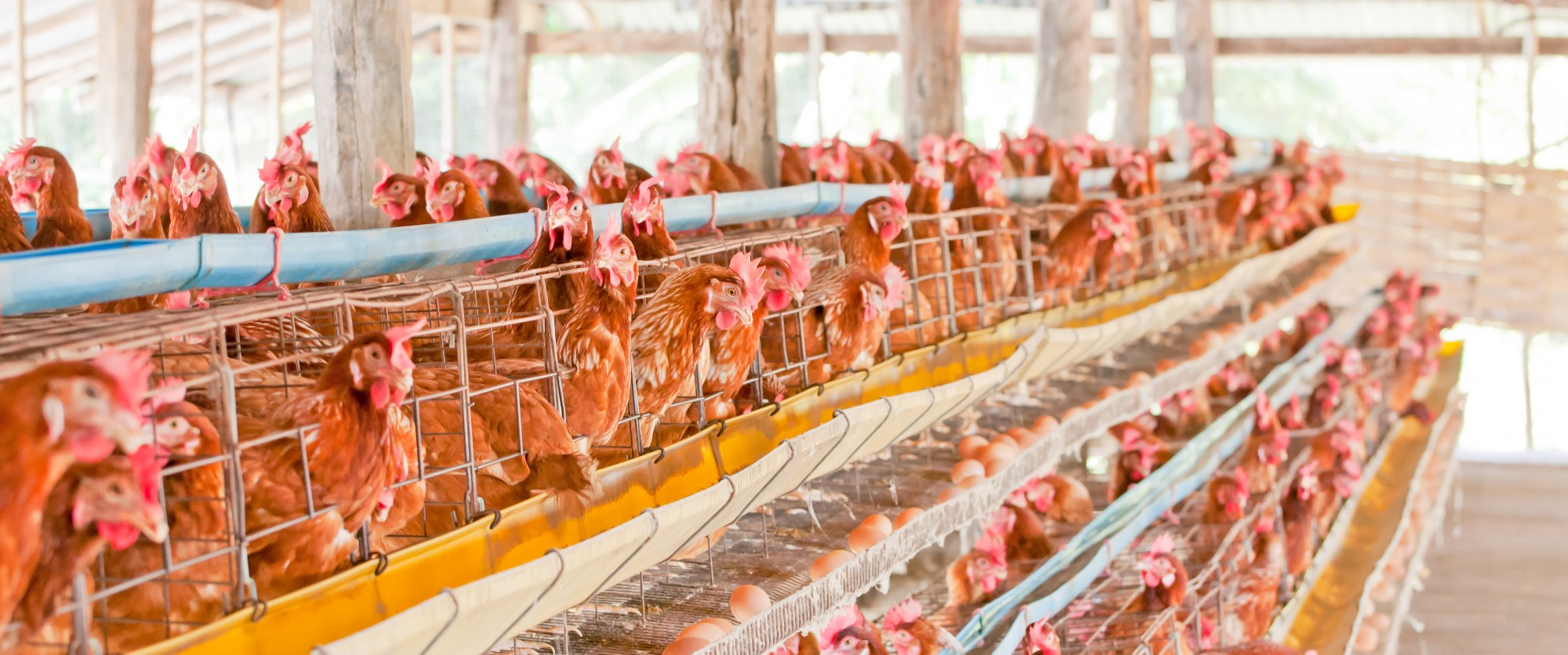Battery cages are a housing system used for laying hens worldwide in modern poultry egg production (Banga-Mboko et al., 2010). It is estimated by Awoniyi (2003) and corroborated by Peterman (2003) that up to 90% of all laying hens in commercial production are housed in battery cages in most developed countries today. While some European countries are moving away from this practice today (Tauson, 1998), the use of cages is actually increasing in developing countries (Bell, 1995).
 Source: TNAU Agritech Portal
Source: TNAU Agritech Portal
A battery cage is a small metal wire cage of approximately 16” by 18”. These cages are most commonly arranged back-to-back in three rows of identical small metal wire cages connected together like battery cells, hence the name. Further, these rows are stacked on top of one another. This formation is called ‘tier cages’. Two other common arrangements include ‘California cages’ (stair-step system) and ‘flat deck cages’ (single tier cages) (Blount, 1968). In this housing system, hens have access to automatic management-controlled feed and water. Further, the wire cage floors are sloped so that eggs roll down to the egg tray for easy automated collection. Similarly, hens’ droppings fall through the wire cage floor either onto a conveyor belt or into a pit for disposal. While the space provided for each hen varies across each farm, the space allowance in Canada is 423 cm2/hen or 65.6 in2/hen (SPCA, 2009). To put things into perspective, the space available to each hen in a battery cage is often described as less than the size of a sheet of A4 paper.

Amazing I will build one for my birds